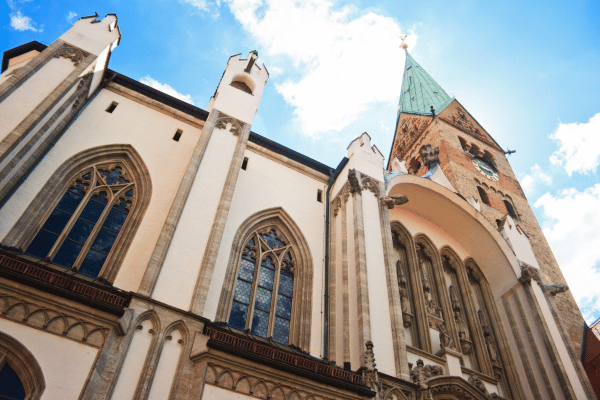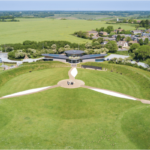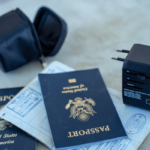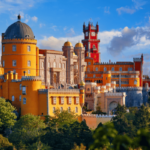Embark on a magical journey through the heart of Europe as we Discover Bavaria’s Romantic Route. This enchanting passage winds through historic cities, offering a unique blend of culture, history, and breathtaking landscapes.
A Guide to Bavaria’s Picturesque Pathways

Bavaria’s Romantic Route, a pathway winding through Southern Germany, is more than a mere travel destination; it’s a journey back in time. This route, established in the 1950s, stretches over 350 kilometers, linking quaint towns and historic cities. Each destination on this path tells a unique story, brimming with rich history, medieval architecture, and cultural heritage.
Travelling this route, you’ll encounter iconic landmarks such as Neuschwanstein Castle, which inspired Disney’s Sleeping Beauty castle. Additionally, the route leads through picturesque towns like Rothenburg ob der Tauber, known for its well-preserved medieval old town. Such places offer a mesmerizing glimpse into Germany’s past, coupled with contemporary comforts.
Moreover, the Romantic Route is not just about historical treasures. It’s a celebration of Bavarian culture, offering an authentic taste of regional cuisines and traditional festivities. Seasonal markets, folk festivals, and regional delicacies add to the charm, creating an immersive cultural experience.
Exploring Rothenburg’s Timeless Medieval Charm
Rothenburg ob der Tauber, a gem on the Romantic Route, is a medieval marvel. Walking its cobblestone streets is like stepping into a storybook. The town’s well-preserved walls and towers offer stunning views and a sense of historical wonder. It’s a perfect blend of past and present, where every corner reveals a piece of history.
In Rothenburg, the Marktplatz, or market square, is a focal point of activity. Here, visitors can Discover Bavaria’s Romantic Route and its rich traditions. The square is surrounded by colorful, half-timbered houses and historic sites like the Rathaus (Town Hall) with its impressive Renaissance facade and tower.
Additionally, Rothenburg’s museums, such as the Medieval Crime and Justice Museum, provide unique insights into Bavarian history. The town’s Christmas market, known as ‘Reiterlesmarkt’, is renowned worldwide, bringing a festive spirit that captivates visitors from all over, making Rothenburg a must-see destination on Bavaria’s Romantic Route.
Unveiling Augsburg’s Rich Cultural Heritage

Augsburg, another highlight on Bavaria’s Romantic Route, boasts a history that dates back over 2000 years. As one of Germany’s oldest cities, it offers an intriguing blend of ancient and modern attractions. The city’s storied past as a Roman provincial capital and a significant hub during the Renaissance period is evident in its stunning architecture and historic sites.
Key attractions in Augsburg include the Augsburg Cathedral and the Fuggerei, the world’s oldest social housing complex still in use. These landmarks not only Discover Bavaria’s Romantic Route but also tell tales of the city’s religious and social evolution. The Fuggerei, in particular, represents a unique aspect of social history, maintained since the 16th century.
Augsburg also thrives in arts and culture. The city’s art galleries, like the Schaezlerpalais, display both classical and contemporary works. The annual Augsburger Plärrer, Bavaria’s largest folk festival, showcases the region’s vibrant culture, with traditional music, food, and amusement rides, making Augsburg an unmissable destination for those exploring Bavaria’s Romantic Route.
Discover Bavaria’s Romantic Route in Würzburg
Würzburg, set at the beginning of Bavaria’s Romantic Route, offers a majestic start to this journey. This city is renowned for the Residenz, a UNESCO World Heritage site. The Residenz is an epitome of Baroque architecture and houses some of Europe’s most impressive frescoes and stucco work, making it a cultural treasure trove.
Würzburg is not just about grand buildings; it’s a city of vibrant culture and lush vineyards. The local Franconian wine, particularly the Silvaner, is a delight for wine enthusiasts. Visitors can enjoy scenic views of the vine-covered hills and the Main River, which add to the romantic ambiance of the city.
Furthermore, the city’s old bridge, Alte Mainbrücke, provides panoramic views of the fortress Marienberg and the surrounding area. This bridge, lined with statues of saints, is a popular spot for both locals and tourists to gather and enjoy the picturesque setting. Würzburg’s blend of artistic heritage and natural beauty makes it a quintessential stop on Bavaria’s Romantic Route.
Nuremberg’s Historical Journey and Vibrant Culture
Nuremberg, a significant stop on Bavaria’s Romantic Route, is a city where history and modernity converge. Known for its medieval architecture, the city’s historical significance is palpable in its ancient walls and historical buildings. Nuremberg Castle, towering over the old town, offers a glimpse into the city’s past as a former imperial city.
The city’s rich history is also reflected in its numerous museums, including the German National Museum, which houses an extensive collection of artifacts showcasing Germany’s cultural history. Additionally, Nuremberg’s role in World War II is acknowledged in sites like the Documentation Center Nazi Party Rally Grounds, providing insights into a crucial period of world history.
Yet, Nuremberg is not solely defined by its past. The city is vibrant with contemporary arts, diverse cuisine, and bustling markets. The Christkindlesmarkt, Nuremberg’s famous Christmas market, is a festive highlight, attracting visitors worldwide to Discover Bavaria’s Romantic Route. Nuremberg’s blend of historical depth and lively culture makes it an essential experience for any traveler.
Experiencing Dinkelsbühl’s Undiscovered Medieval Charm
Dinkelsbühl, nestled along Bavaria’s Romantic Route, is a hidden gem waiting to be discovered. This impeccably preserved medieval town is a testament to Germany’s rich history. Encircled by fortifications and watchtowers, Dinkelsbühl’s old town exudes a fairy-tale charm, untouched by the passage of time.
Strolling through Dinkelsbühl, visitors encounter colorful half-timbered houses, narrow alleys, and historic landmarks like the St. George’s Minster, an imposing Gothic church. The town’s history as a Free Imperial City during the Holy Roman Empire is evident in its architectural splendor and cultural heritage.
Beyond its historical allure, Dinkelsbühl celebrates its traditions through vibrant festivals such as the Kinderzeche, commemorating the town’s children saving it during the Thirty Years’ War. This festivity, along with the town’s quaint charm, makes Dinkelsbühl an enchanting stop to Discover Bavaria’s Romantic Route. Its understated beauty and rich history captivate those seeking an authentic Bavarian experience.
Füssen’s Alpine Splendor on the Romantic Route
Füssen, set in the picturesque Bavarian Alps, marks the southern end of Bavaria’s Romantic Route. This charming town is not just a gateway to the famous Neuschwanstein Castle; it’s a destination rich in history and natural beauty. Nestled beside crystal-clear lakes and framed by majestic mountains, Füssen offers a serene escape.
The town’s historical center, with its medieval streets and Baroque architecture, is a journey through time. Füssen’s High Castle, perched on a hill, houses a branch of the Bavarian State Collections of Paintings, showcasing medieval and Renaissance art. The tranquil monastery of St Mang adds to the town’s historical tapestry.
Füssen is also a haven for outdoor enthusiasts. The surrounding alpine landscapes provide opportunities for hiking, cycling, and in winter, skiing. This natural playground, combined with the town’s cultural heritage, makes Füssen a compelling stop to Discover Bavaria’s Romantic Route. Its blend of alpine beauty and historical richness offers an unforgettable Bavarian experience.
Landsberg am Lech’s Captivating Beauty and History
Landsberg am Lech, a picturesque town on Bavaria’s Romantic Route, captivates visitors with its scenic beauty and historical significance. The town, perched on the banks of the Lech River, boasts a well-preserved medieval center, complete with cobbled streets and colorful buildings, offering a glimpse into Bavaria’s rich past.
The town’s most iconic landmark is the Landsberg Prison, known for holding Adolf Hitler during his imprisonment in 1924. This historical site offers a profound reflection on Germany’s turbulent history. Furthermore, the town’s main square, Hauptplatz, is a bustling hub of activity, surrounded by historic buildings and lively cafes.
Landsberg am Lech’s charm extends beyond its historical sites. The town is surrounded by natural beauty, with opportunities for leisurely walks along the river and trails leading to panoramic views of the Bavarian countryside. This blend of natural splendor and historical depth makes Landsberg an essential stop to Discover Bavaria’s Romantic Route, offering a unique perspective on Bavaria’s heritage and landscape.
Discover Bavaria’s Romantic Route in Bad Mergentheim
Bad Mergentheim, located on Bavaria’s Romantic Route, offers a unique blend of health, history, and culture. Known for its mineral springs, the town has been a renowned spa destination since the Middle Ages. The Kurpark, a beautifully landscaped park, is a testament to the town’s long-standing tradition of wellness and relaxation.
Apart from its spa heritage, Bad Mergentheim is rich in history. The highlight is the Deutschordensschloss, a castle that was once the residence of the Teutonic Order’s Grand Master. This historical monument provides a fascinating insight into the chivalric orders and their influence in medieval Europe.
The town also offers cultural experiences with its museums and galleries, showcasing local art and history. Events like the town’s wine festival celebrate the region’s viticulture, adding to the cultural tapestry. Bad Mergentheim’s combination of historical attractions, wellness facilities, and cultural events makes it a captivating destination to Discover Bavaria’s Romantic Route.
Harburg’s Medieval Majesty on the Romantic Road

Harburg, a stop along Bavaria’s Romantic Route, is a journey into the medieval era. Dominated by its imposing castle, Harburg Castle, the town offers an authentic medieval experience. This well-preserved fortress, dating back to the 11th century, stands as a testament to the architectural and historical significance of the region.
The town itself, with its ancient walls and traditional Bavarian houses, paints a picturesque scene. Strolling through Harburg, visitors are transported back in time, with each building and alleyway telling a story of the past. The peacefulness of the town contrasts with the grandeur of its castle, creating a unique atmosphere.
Harburg’s charm is not just in its history but also in its vibrant present. The town hosts various cultural events and festivals that celebrate its heritage and community spirit. These events, along with the scenic beauty and historical richness, make Harburg a delightful stop to Discover Bavaria’s Romantic Route, offering a blend of the past and present.
Schwangau: Gateway to Fairytales and Mountains
Schwangau, a charming village on Bavaria’s Romantic Route, is synonymous with fairy-tale landscapes. Nestled in the Bavarian Alps, it’s famed for its proximity to Neuschwanstein and Hohenschwangau Castles. These iconic landmarks are not just architectural marvels but also embody the romantic spirit of the region.
Beyond the castles, Schwangau is a haven for nature lovers. The village is surrounded by pristine lakes, such as Alpsee and Schwansee, offering opportunities for swimming, boating, and relaxation. The nearby Tegelberg Mountain provides panoramic views and is a hotspot for hiking and paragliding enthusiasts.
Moreover, Schwangau’s rich history is reflected in its traditional Bavarian culture. The village maintains a strong connection to its heritage, evident in its architecture, cuisine, and local customs. This combination of natural beauty, historical landmarks, and cultural authenticity makes Schwangau an essential destination to Discover Bavaria’s Romantic Route.
in summary
As we conclude our exploration of Bavaria’s Romantic Route, we reflect on the journey through these diverse and enchanting destinations. From the medieval charm of Rothenburg to the alpine splendor of Füssen, each location on this route offers a unique glimpse into the heart of Bavarian culture and history. This journey is not just a travel itinerary; it’s an immersive experience into a region rich in heritage, natural beauty, and architectural wonders.
Throughout this exploration, we’ve witnessed how each town and city along the route preserves its unique identity while contributing to the overall tapestry of Bavarian culture. Whether it’s through the historic walls of Nuremberg, the spa traditions of Bad Mergentheim, or the vineyards of Würzburg, Bavaria’s Romantic Route offers a diverse range of experiences that cater to all interests.
In inviting you to Discover Bavaria’s Romantic Route, we encourage you to delve into this journey yourself. Whether you’re seeking historical insights, natural escapes, or cultural enrichment, this route promises an unforgettable adventure. Share your experiences, thoughts, or questions in the comments below, or explore further articles on our blog for more inspiration. Embrace the journey and let the Romantic Route guide you through the heart of Bavaria.
II. Frenquently Asked Questions About Germany
- How is Germany's education system structured?Germany's education system is highly regarded, offering various paths including vocational training, universities, and universities of applied sciences. Education is compulsory for children aged 6 to 16.
- What is the significance of the Berlin Wall?The Berlin Wall was a symbol of the Cold War, dividing East and West Berlin from 1961 to 1989. Its fall in November 1989 marked the beginning of German reunification, which was officially completed in 1990.
- Can you describe the German Christmas markets?German Christmas markets (Weihnachtsmärkte) are magical, featuring twinkling lights, festive decorations, traditional crafts, and stalls selling mulled wine, roasted nuts, and gingerbread. They're a must-experience for visiting Germany in December.
- What are some popular outdoor activities in Germany?Germany offers a wide range of outdoor activities, including hiking in the Black Forest, cycling along the Moselle River, skiing in the Bavarian Alps, and exploring the country's numerous lakes and national parks.
- How does healthcare work in Germany?Germany has a universal healthcare system, providing high-quality medical services to all residents. It's funded by a combination of statutory health insurance and private health insurance.
- What is the German Autobahn, and what should I know about driving on it?The Autobahn is Germany's famed highway system, known for sections without speed limits. However, drivers are advised to maintain recommended speeds and be mindful of safety regulations, including the right-lane driving rule for slower vehicles.
- How do I tip in Germany?Tipping in Germany is customary but not mandatory. For good service, it's typical to round up to the nearest euro for taxis and add 5-10% in restaurants.
- What are some unique cultural customs in Germany?Germans value punctuality, privacy, and directness. Greetings are formal, with a firm handshake, and titles are important. Recycling is taken seriously, and Sundays are reserved for rest and family time.
- What is Fasching, and how is it celebrated?Fasching, also known as Carnival, is a festive season leading up to Lent, featuring parades, masquerades, and street parties. It's particularly vibrant in cities like Cologne and Düsseldorf.
- What are some iconic German inventions?Germany is credited with numerous inventions, including the automobile by Karl Benz, the aspirin by Bayer, and the printing press by Johannes Gutenberg, significantly impacting global innovation.

Ryan Taylor, a seasoned traveler with over a decade of experience exploring Europe’s nooks and crannies, offers a wealth of knowledge and unique insights into the continent’s diverse cultures and landscapes. His passion for travel began in his early twenties, and since then, Ryan has journeyed through numerous European countries, collecting stories, tips, and a deep understanding of each destination’s unique charm. His blog entries are not just guides but narratives enriched with personal experiences, making every recommendation and piece of advice relatable and practical for fellow travel enthusiasts. With a keen eye for hidden gems and a love for sharing his adventures, Ryan’s writings are a treasure trove for anyone seeking to discover the beauty and richness of Europe.






